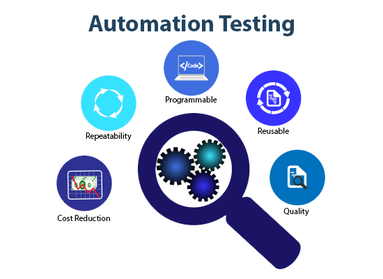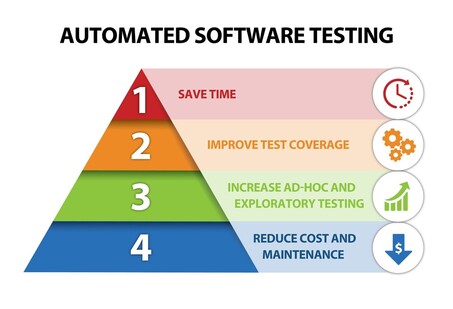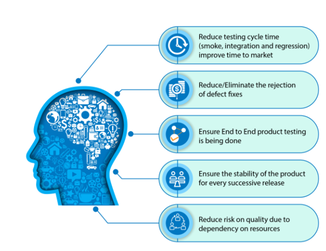 What is Automation Testing? Automation testing is a Software testing technique used to test and compare the actual outcome against the expected outcome. This can be achieved by using any automation testing tool and writing test scripts. Test automation is used to automate repetitive tasks, regression tests and other testing tasks which are difficult to perform manually. The goal of automation testing is to complete test execution efficiently and in the least amount of time. What are the Benefits of Automation Testing over manual testing?
The Importance of Automation Testing in Organizations: 1. Increased Scope of Software Testing:
2. Increased Test Coverage:
3. Faster Testing Process:
4. Improved Accuracy:
5. Earlier Detection of Bugs:
6. Reusability of Test Cases:
According to Smartsheet, these are the Top 7 Automation Tools available in the market as of 2019: The Growing Importance of Test Automation Skills in DevOps In order to improve delivery speed, software development teams have adopted a DevOps culture that prioritizes concepts that support continuous delivery which needs continuous testing. This is also known as Continuous Integration and Continuous Delivery (CI/CD). Continuous Integration and Continuous Delivery (CI/CD) Continuous Integration (CI) is the process of implementing end-to-end automated testing throughout all possible phases of the delivery lifecycle. This process can be utilized with any type of application (web, mobile etc.) by employing the concept of continuous testing, the DevOps team makes an effort to catch bugs earlier in the development process where they are less expensive to fix, thus lowering the risk posed to the delivery schedule. In addition to lowering risk, continuous testing ensures that the incremental changes made to the application can be reliably deployed at any time, making the application continuously deliverable. Continuous Delivery (CD) is an approach to application delivery that prioritizes being able to deliver application changes at any point in time. When an organization is properly utilizing a strategy of continuous delivery its applications always exist in a state that can be deployed. Through the use of this approach the organization would experience a lower level of risk when releasing changes to an application by doing so incrementally with shorter development cycles. This process of CD is made possible through the use of continuous testing, which relies heavily on test automation. Continuous Deployment
The final stage of a mature CI/CD pipeline is continuous deployment. As an extension of continuous delivery, which automates the release of a production-ready build to a code repository, a continuous deployment automates releasing an app to production. Because there is no manual gate at the stage of the pipeline before production, continuous deployment relies heavily on well-designed test automation. Here are some of the top used DevOps tools as of 2019: CI/CD practices make deployment of an application less risky, so it’s easier to release changes to apps in small pieces, rather than all at once. As software development organizations make the move to processes that prioritize continuous delivery, the value of implementing continuous testing through test automation continues to rise. With the ongoing growth of test automation, it becomes necessary for all involved in software development to maintain a great understanding of the test automation frameworks and tools that make test automation possible. For more information contact us today! |
Categories
All
Archives
June 2023
Subscribe |



 RSS Feed
RSS Feed
